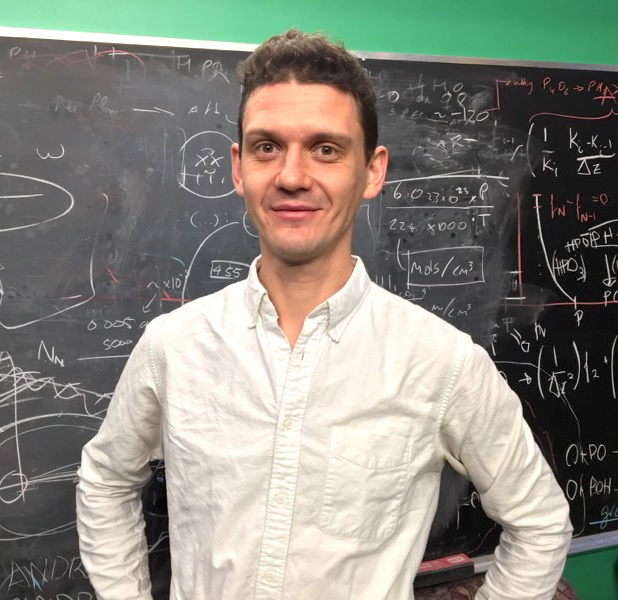Welcome! I’m an assistant professor in Peking University’s Department of Atmospheric and Oceanic Sciences and a member of our Planetary Atmospheres group.
I originally grew up in Tanzania, Germany, and Kenya. I went on to study Physics and Philosophy at Harvard, and did a PhD in climate science and extrasolar planets at the University of Chicago. After that I was a postdoc at MIT, supported by a fellowship from the James S. McDonnell Foundation. I now work at Peking University in Beijing, China.
Why do different planets have such different climates? My work tries to explore this question from a range of angles, with a particular emphasis on the atmospheres of exoplanets and climate change on Earth. Find out more about our group’s research here.
Interested in pursuing a summer research project, a PhD, or a postdoc at Peking University? Get in touch via email (see left). More links:
Open positions in Planetary Atmospheres
Peking University Boya postdoctoral fellowship
- October 2025 Wacky climates on Hycean worlds?! ... Yichen Gao led a new theory paper about Hycean worlds (habitable mini-Neptunes that feature H2-atmospheres above liquid H2O oceans). We find these planets exhibit surprising climates that can show bistability, oscillations, and multistability. The bad news - many exoplanet atmosphere models do not yet capture these effects, which might affect the conclusions of previous studies. The good news - Hycean planets are even more interesting than we thought!
- October 2025 More on TRAPPIST-1: Congratulations to Michael Gillon and Elsa Ducrot for leading a new study published in Nature Astronomy. Using a JWST thermal phase curve observation, our team was able to confirm that TRAPPIST-1b has no atmosphere. This confirms the planet's earlier eclipse observations with JWST, which suggested no thick atmosphere. TRAPPIST-1c is a bit more puzzling, and seems to have either a more reflective surface or a remnant atmosphere.
- June 2025 A trend in the observed emission temperatures of rocky exoplanets? ... Brandon Coy led a paper that finds a suggestive trend across the observed secondary eclipses of rocky exoplanets. Either atmospheres are more likely on cooler planets, or surface properties of airless exoplanets need to vary with temperature.
- September 2024 Still no atmospheres? ... Qiao Xue and Megan Mansfield led two studies that used JWST to search for signs of atmospheres on the rocky exoplanets GJ 1132b and Gl 486b. The data rule out most atmospheric scenarios, making it unlikely that either planet is holding on to a thick atmosphere.
- August 2024 Putting a new spin on the habitable zone ... Our new study, led by Ruizhi Zhan, investigates the atmospheric dynamics of habitable planets around White Dwarfs. These planets are likely tidally locked but also rotate extremely rapidly, which gives rise to a new regime of atmospheric dynamics we call 'Bat rotation' and which we explain using shallow-water theory. Although it's still unclear whether planets around White Dwarfs are common, our results show that such planets would be attractive targets for atmospheric characterization via JWST thermal phase curves.
- May 2024 Everybody knows CO2 absorbs radiation, which allows it to act as a radiative forcing. However, Kirchhoff's law states that a gas which absorbs radiation also emits radiation. This means CO2 can influence Earth's radiative feedback. Our new study, led by Yue Xu, explains why CO2 helps to stabilize Earth's feedback in warm climates, but destabilizes it in cold climates. That means CO2 provides an additional mechanism for feedback state-dependence, which needs to be taken into account when comparing today with paleoclimates or future climates.
- April 2024 Tidal models long predicted that exoplanets should be tidally locked, but didn't have much empirical evidence to back them up. Our new study, led by Xintong Lyu, shows that thermal observations of the super-Earth LHS 3844b strongly constrain its rotation rate; the planet is almost certainly tidally locked. In addition, its surface is almost as dark as a perfect blackbody, so LHS 3844b's surface is likely space weathered. Read more in this news highlight.
- January 2024 Does moisture strengthen or weaken atmospheric eddies? Our new study led by Nick Lutsko suggests that, in an Earth-like atmosphere, moisture makes storms weaker. A preprint is available here.
- June 2023 Still hunting for exoplanet atmospheres ... Congratulations to Sebastian Zieba for leading this study that was recently published in Nature! From simple theory papersa, b, c, d, over a first test run with the Spitzer telescopee, to now having the incredible capabilities of JWST, the search for atmospheres on roughly Earth-sized planets has been one of the most exciting research areas I've had the privilege to be involved with. In this paper, our team found that the nearby TRAPPIST-1c does not have a thick Venus-like atmosphere. Given the similar finding for the neighboring TRAPPIST-1bf, maybe it's harder than we originally thought to find truly Earth-like planets out there?
- May 2023 The most important feedback for determining how much Earth warms under global warming is the longwave clearsky feedback. Together with Nadir Jeevanjee and Nick Lutsko, we developed a way to estimate this feedback solely using pen and paper. The paper is published here. Want to compute analytical spectral feedbacks yourself? The scripts are available on github.
- October 2022 Our Planetary Atmospheres group has open postdoc positions. Find out more here.
- August 2022 Interested in climate feedbacks? Check out this new preprint with Nadir Jeevanjee and Nick Lutkso. We develop an analytical model to explain both the state-dependence and spatial structure of Earth's longwave climate feedback.
